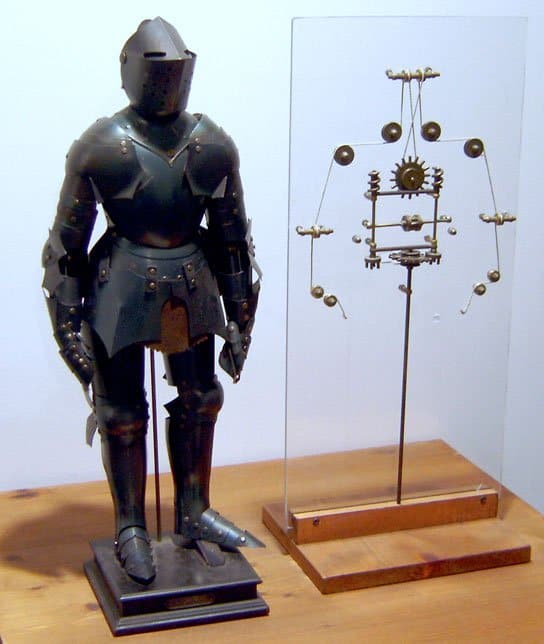
Leonardo da Vinci’s Automata: History
Leonardo da Vinci was a painter, engineer, sculptor, scientist, and architect who embodied the High Renaissance. While known for his artwork, he also had a number of ingenious and unusual inventions.
The automata are several robotic devices that he wrote about. It isn’t clear whether he constructed any or all of them, though there are reports of them in operation during his time. No complete designs exist for any of them, making it difficult to know exactly how they operated. Here are the three most popular automata of Leonardo da Vinci:
Quick Facts
- Created
- C. 15th and 16th century, possibly between 1478, 1495, and 1515
- Creator
- Leonardo da Vinci
- Original Use
- Entertainment, gift to the King of France
- Cost
- N/A
- Mechanical lion
- Self-propelled cart
- Mechanical knight
Mechanical Lion
There are stories that Leonardo made a mechanical lion with a wonderful artifice and was able to walk forward and present flowers at the end of its performance. It reportedly opened its chest to reveal a cluster of lilies for the King of France. It is said that this machine was presented to King Francis I as an amusement or as a diplomatic gesture during a banquet hosted by Florentine merchants and Giuliano de’ Medici in Lyon in honor of Francis I on July 12th, 1515. Because the lion is the symbol of Florence and lilies are the fleurs-de-lis of France, this was a very symbolic automaton.
The mechanical lion perhaps was presented also during the peace talks between the French king and Pope Leo X in Bologna on December 19th, 1515. Later, Leonardo took the lion when he moved to Château du Clos Lucé in France and the device was demonstrated and caused a great stir at the festival organized at Argentan in 1517.
Self-Propelled Cart
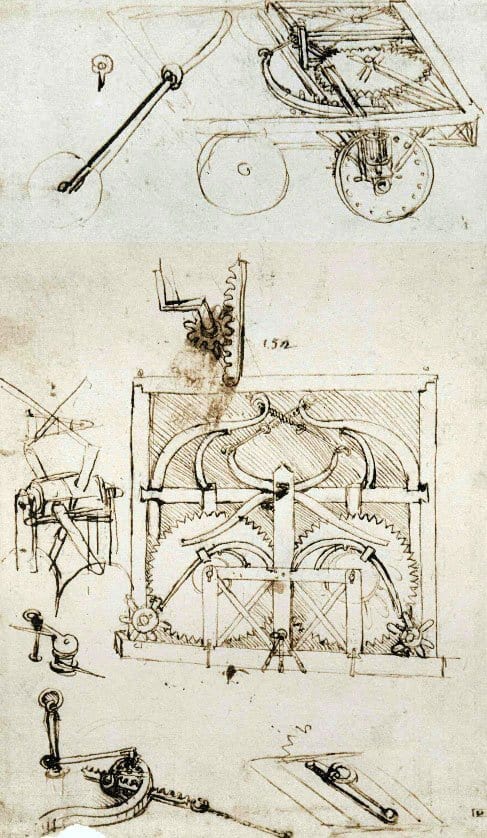
One of the biggest collections of Leonardo’s manuscripts, the famous Codex Atlanticus, describes a mechanism often called the self-propelled cart of Leonardo. The design was likely created between 1478 and 1480 when the young Leonardo was still in Florence.
This famous drawing of Leonardo is a complex model of an automaton. It seems that the cart was devised for use in theatrical settings, an area of particular interest to Leonardo.
Mechanical Knight
Both the Codex Atlanticus and Codex Madrid mention a mechanical knight. It was clad in a typical German-Italian suit of armor of the late 15th century and was capable of some human-like movements. The first believed demonstration of this machine was in Milano in 1495.
It was designed to sit up, wave its arms, move its head, and open and close its anatomically correct jaw. It may have even made sounds to the accompaniment of automated drums, as there appear to be drawings of an automatic drum-roll in the automaton drawing.
Leonardo da Vinci’s Automata: How They Worked
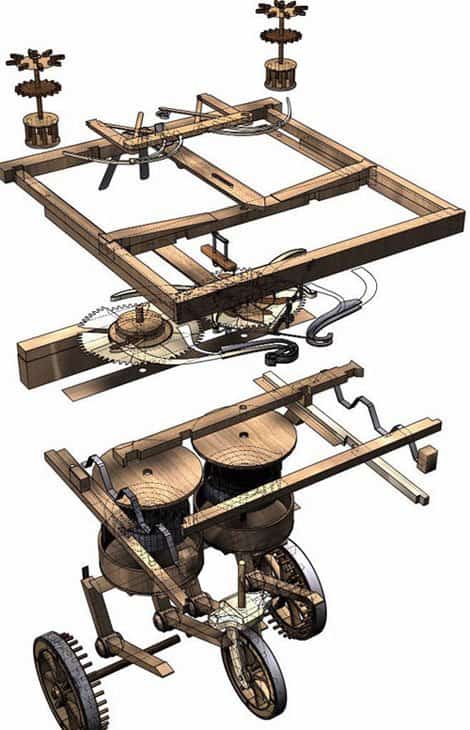
All of the automata relied on similar mechanics. They used pulleys, cables, and gears to perform basic movements. Pegs and blocks were used to program movements, so the automata could in theory move without an operator and could be given different programs for different tasks.
Mechanical Lion: How It Worked
The exact design of the mechanical lion is unknown. The drawings show a complex series of pulleys and ropes to help the lion move about and eventually open its chest area, originally used to display a bouquet of lilies.
Based on the surviving sketches of the mechanical lion, the Italian Cultural Institute in Paris reconstructed this 16th-century robot for research and display purposes. The reconstruction of the lion was approximately six feet, seven inches tall, and 10 feet long.
Self-Propelled Cart: How It Worked
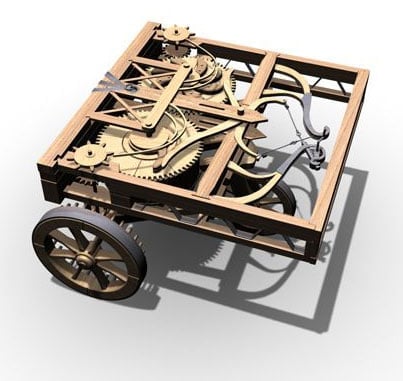
Like other automata, many specific features of the self-propelled cart are unknown. It was believed to be programmed and wound up by the mainsprings, which were spiral springs under the horizontal cogwheels. Lower wheels and a unique crossbow system helped power the cart as well.
Leonardo da Vinci designed the cart with programmable pegs and blocks. These features allowed the cart to move in a predetermined path on its own, including stopping with a handbrake that didn’t require a human to operate it.
Mechanical Knight: How It Worked
There are many drawings of the robotic knight machine but any modern recreation of this automaton is also based partially on speculation. It appears to have been constructed using two independent systems:
- Legs, ankles, knees, and hips system
- Articulated shoulders, elbows, wrists, and hands system
These systems had three and four degrees of freedom, respectively. The arms appear to have been powered by a programmable controller, while the legs were powered by an external crank and cable.
Leonardo da Vinci’s Automata: Historical Significance
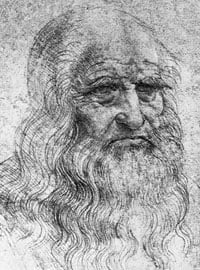
Despite the fact that complete drawings don’t remain of any of these automata, they still represent significant historical accomplishments. They are widely regarded as the first robot and the first robotic vehicle. The automata also played a part in inspiring modern-day robotics. NASA robotics expert Mark Rosheim credited da Vinci’s work in the field as one of his inspirations for the Mars Exploration Rovers.
Up Next…
- The 10 Largest Robotics Companies In The World, And What They Do: Robotics can and do change the world. Discover what the biggest robotics companies in the world are working on now!
- NASA: the Complete History: NASA’s Mars rover was inspired by da Vinci’s work. Explore the exciting history of the world’s greatest space agency!
- Shakey the Robot Explained: Everything You Need to Know: Shakey was the first robot able to reason about its own actions – find out more here!
Want to Retire Early? Start Here (Sponsor)
Want retirement to come a few years earlier than you’d planned? Or are you ready to retire now, but want an extra set of eyes on your finances?
Now you can speak with up to 3 financial experts in your area for FREE. By simply clicking here you can begin to match with financial professionals who can help you build your plan to retire early. And the best part? The first conversation with them is free.
Click here to match with up to 3 financial pros who would be excited to help you make financial decisions.
The image featured at the top of this post is ©AM / public domain.
